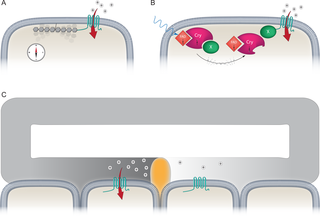PLOS Biology ( IF 9.8 ) Pub Date : 2017-10-23 , DOI: 10.1371/journal.pbio.2003234 Gregory C. Nordmann , Tobias Hochstoeger , David A. Keays

|
Evolution has equipped life on our planet with an array of extraordinary senses, but perhaps the least understood is magnetoreception. Despite compelling behavioral evidence that this sense exists, the cells, molecules, and mechanisms that mediate sensory transduction remain unknown. So how could animals detect magnetic fields? We introduce and discuss 3 concepts that attempt to address this question: (1) a mechanically sensitive magnetite-based magnetoreceptor, (2) a light-sensitive chemical-based mechanism, and (3) electromagnetic induction within accessory structures. In discussing the merits and issues with each of these ideas, we draw on existing precepts in sensory biology. We argue that solving this scientific mystery will require the development of new genetic tools in magnetosensitive species, coupled with an interdisciplinary approach that bridges physics, behavior, anatomy, physiology, molecular biology, and genetics.
中文翻译:

磁感受-没有受体的感觉
进化为地球上的生活赋予了一系列非凡的感觉,但也许人们对磁感受的了解最少。尽管有令人信服的行为证据表明存在这种感觉,但是介导感觉转导的细胞,分子和机制仍然未知。那么动物如何探测磁场呢?我们介绍并讨论了试图解决此问题的3个概念:(1)基于机械敏感的磁铁矿的磁感受器,(2)基于光敏化学物质的机制,以及(3)附件结构内的电磁感应。在讨论这些想法各自的优缺点时,我们借鉴了感官生物学中的现有规范。我们认为解决这一科学难题将需要开发磁敏感物种的新遗传工具,



























 京公网安备 11010802027423号
京公网安备 11010802027423号